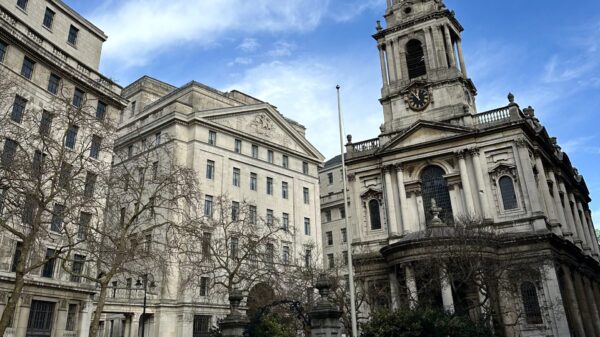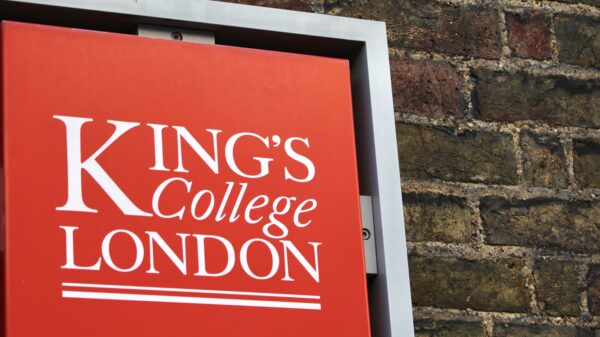Long before it was occupied by bustling students and crowds, the buildings and accommodation at King’s used to serve for different purposes; amongst them include a palace, a war-time hospital, print works and a burial ground.
Stamford Street Apartments used to be a W H Smith print works
http://manchesterhistory.net/architecture/1930/stamfordapartments.html
http://www.british-history.ac.uk/survey-london/vol23/pp18-22:
I always thought that this suspiciously large windowed accommodation resembled an old factory and my guesses were far from wrong. According to the British Institute of Historical Research, a large W.H. Smith & son printing works was erected there in 1914-16; it was later sold to the Daily Telegraph in 1939 but was not occupied by them due to the outbreak of war. Thereafter, it has been used for storage and was badly damaged by enemy action.
Â
Great Dover Street Apartments used to serve as a burial ground
http://www.ancienthistoryarchaeology.com/female-gladiators-in-the-arc
Excavations in the 1990’s found that the area used to be a Roman burial ground: a woman gladiator’s body was also discovered on the site, later to be referred to the ‘Great Dover Street woman’. Archeologists found surviving fragments of the pelvis and identified the grave as belonging to a woman in her early 20s.
Other ancient relics were found to be buried alongside her, including the remains of high status food stuffs including four chickens and a dove. The grave also contained 8 unused lamps imported from France, four were plain but others were decorated with designs significant to the gladiatorial amphitheater. Finally, pine cones were found which were added to mask the smell of the cremation, they had further significance in that they were native to Italy where they were often grown around arenas.
The expensive items in the burial and their significance to the games has led archeologists to deduce that there was a strong possibility the woman had once been a gladiator from abroad who found in the large amphitheater of Roman London.
Guy’s Hospital
http://www.british-history.ac.uk/survey-london/vol22/pp36-42
Unlike Strand, the architectural history of Guy’s hospital is insignificant. Before the hospital existed, there were a number of houses standing on it in small plots; these were later bought by the famed philanthropist, Thomas Guy.
Somerset house was a palace for royalsÂ
https://www.somersethouse.org.uk/history/the-tudor-palace
For many centuries, the Strand and the river side were fashionable locations for the residences of the wealthy and influential. Among these people was Edward Seymour, uncle to Edward VI. When Henry VIII died in 1574, his son was too young to ascend the throne, and so the ambitious Seymour took this opportunity to make himself Lord Protector and Duke of Somerset. Naturally, he demanded a new palace to be created and thus Somerset House came to be. However, making space for the palace necessitated the demolition of several churches and chapels. This proved to be widely unpopular and led to the Duke’s brief imprisonment in the Tower of London in 1549, although he was soon released.  Despite this, the Duke hardly had the leisure to enjoy Somerset house and in 1551 he was arrested again and tried for treason, which led to his execution the following year.
Somerset house served as residence for many QueensÂ
After Seymour’s execution, Princess Elizabeth, the future Queen Elizabeth I, stayed in Somerset House until her accession to the throne in 1558. After her death, it was occupied by Anne of Denmark, the wife of James I of England in 1589. It was renamed ‘Denmark House’ and became the centre of English artistic and social life. It was also lavishly revamped from 1609 by the famous Inigo Jones and this made it one of the most exorbitant enterprises of the Jacobean era. After Charles I came to the throne, his wife Henrietta Maria of France became entitled to the use of the palace and further redecorations followed, overseen by Inigo Jones. Henrietta Maria stayed until the advent of the civil war, before it was taken over and used as quarters for General Fairfax who commanded the Parliamentary Army. During the Restoration in 1660, Henrietta Maria returned to Denmark House, however, the plague of 1665 forced her to leave once again. Thankfully, the great fire of 1666 stopped just short of Somerset House. After the death of Charles II, his wife Queen Catherine of Braganza took up the place for residence and was the last queen to reside there.
During the 18th century, Somerset House was used for many purposes, mainly for the use of court officials and foreign authorities, it was during this time that the palace fell into ruin, and demolition began in 1775.
Notable figures who have died in Somerset House
After the civil war, Inigo Jones is said to have died in Somerset House because of his grief which was resulted by the sequestrations enforced upon him by the government. A couple of years later, the notorious Oliver Cromwell died at Somerset House.
















